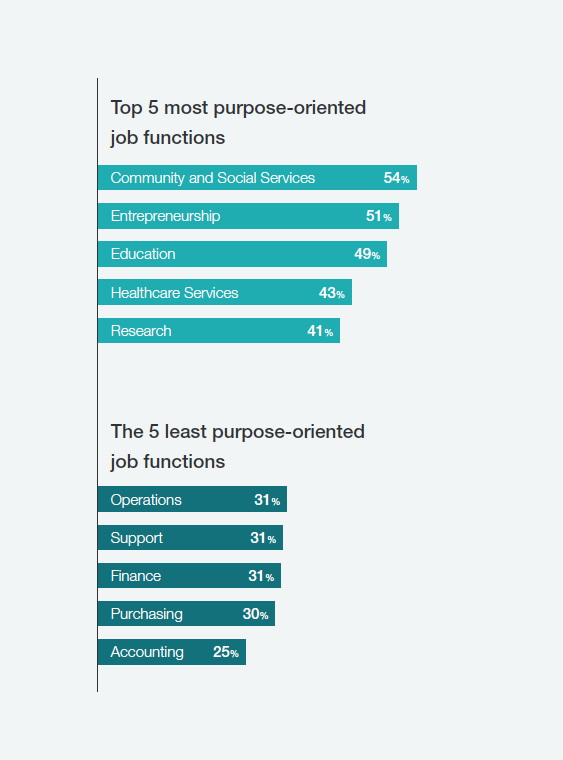The radical changes happening in the United States workforce are impacting organizations. If organizations don’t plan to make changes now, they are at risk of losing relevance in tomorrow’s workforce, which will look and function differently than today’s workforce.
In particular, leaders are watching as every 8.5 seconds another Baby Boomer turns 50, leading to the reality that 75 million Baby Boomers will retire in the next 10-15 years. Losing 45% of the workforce is alarming. Who is going to take their place? Now that the Millennial generation has superseded the Baby Boomers as the largest living generation, leaders must look to them in order to fill the many job vacancies created when Boomers finally hang up their hats.
But Millennial workers don’t fit neatly into the roles Boomers left behind. For one, 58% of them expect to leave their jobs in three years or less. In addition, 52% of Millennials think the corporate environment is outdated and that true success comes from carving one’s own path. So you can see why 54% of hiring managers say they have a difficult time finding and retaining Millennials.
Let’s add another layer to up the ante—employee engagement. The United States workforce is suffering from a lack of engagement. According to research, 45% of employees in the U.S. are not engaged, and 26% are actively disengaged. Disinterested employees are more than disgruntled; they also directly affect the bottom line. $11 billion is lost annually due to employee turnover; companies with engaged employees outperform those without by up to 202%.
So what’s the bottom line? A huge swath of the workforce starting to head out the door into some version of retirement, a generation with different needs pouring in to fill the vacancies in companies they may not believe in, and a whole lot of employees with far away looks in their eyes, feeling uninterested and unfulfilled. Can we agree that something needs to be done?
Start at the Core: Purpose
If you’re going to make the internal shifts needed to survive and thrive in the next decade, you might as well start at the core: purpose at work.
What sets a company with purpose apart from one without? Imperative says there are three core elements for experiencing purpose: positive impact on others, personal development, and delivery of work through strong relationships. A purpose-driven company fosters these experiences for its employees, and has a stated and measured reason and mission for being. This mission should be something that every employee knows.
You may be thinking that “purpose” at work sounds like one of the many buzzwords that have no practical application. That’s not true. Purpose does make a difference, and it’s an actionable concept. Integrating purpose into the workplace will increase employee engagement, performance, and profit. This is shown clearly by the results of LinkedIn and Imperative’s global survey*, Purpose at Work, of 26,151 LinkedIn members in 40 different countries. Let’s take a look at some of the results.
In virtually every country and industry studied, the correlation of satisfaction at work and purpose orientation was consistent. 73% of purpose-oriented workers are satisfied in their jobs, and 37% of LinkedIn members globally (40% in the U.S.) are purpose-oriented. What does it mean to be purpose-oriented? It means that you prioritize work that matters to you, your company, and the world.

A purpose-oriented professional doesn’t need to be caring for orphan orangutans to find purpose in their work. In fact, purpose can be found in every job and industry.

Of course some job functions naturally attract more purpose-oriented people. The top five most purpose-oriented job functions are community and social services, entrepreneurship, education, healthcare services and research. On the low end we have operations, support, finance, purchasing and accounting.

Purpose + Performance
One of the key issues with disengagement is how it impacts performance at work. To show the correlation between purpose and performance, Imperative worked with New York University to conduct research on purpose-oriented talent in the U.S. The results show that purpose-oriented employees score higher than non purpose-oriented employees on every measure. For example, they were 50% more likely to be in leadership positions and 47% more likely to be promoters of their employers. 64% of those surveyed reported higher levels of fulfillment in their work as well.

The study also found that 39% of the purpose-oriented people were likely to stay at their company for 3+ years. In fact, 73% reported being satisfied with their jobs. That’s no small number!

There’s no shortage of information on how to make the Millennial worker happy, but when it comes to purpose, they aren’t the only ones who need it. The truth is, they are the least purpose-oriented generation at only 30%, as opposed to the 47% of Baby Boomers and the 38% of Gen X’ers who are purpose-oriented.

This is likely a “stage not age” scenario, where young adults are focused on different things due to their stage in life. German psychoanalyst Erik Erikson, identified a shift in identity between the ages of 18-35 and 35-36. The young adults (Millennials) are more focused on relationships at that stage, and the older adults shift to associating their identity with their contribution to society.
Purpose + Profit
Let’s not forget the correlation between purpose and profit. Research from the E.Y. Beacon Institute and Harvard Business School shows purpose-driven companies are more likely to be profitable. From 2013 to now, 58% of companies with clearly articulated and defined purpose experienced growth of 10%, while only 42% of companies not prioritizing purpose experienced growth. Further, 42% of non-purpose led companies showed a drop in revenue, while 85% of companies led by purpose showed positive growth.
All of these statistics point to one thing: purpose is integral to success in the future of work. Here are three tips to get you started in your effort to become a purpose-driven organization that attracts purpose-oriented candidates.
Ready to be Purpose-Driven? Three Tips to Get You Started
1. Find Purpose-Oriented Employees By Seeking Passive Candidates
If you want to foster a purpose-oriented organization, you’d be wise to seek candidates who are themselves purpose-oriented. These people are still the minority however, which means recruiting passive candidates (candidates not actively looking for work.) Actually, as 69% of purpose-oriented employees report—they are more likely to be passive, probably because they are invested in their current positions. To grab their interest, focus on your mission, vision, products and services more than perks and benefits. Also, check out Red 5 Studios innovative strategy for recruiting passive candidates here; it’s one of our favorites.
2. Brand with Purpose
From a more macro view, incorporate your purpose directly into your branding efforts. Do the images on your website, recruiting materials and social media channels reflect an organization that values a positive impact on others, personal development and strong relationships? One common misstep is organizations that value diversity yet publish materials with pictures that don’t represent diverse populations. Look at your visual images, evaluate the language used, and align all your branding and communications with your purpose.
3. Don’t be Afraid to Start From Square One
If your organization doesn’t have its purpose clearly defined, you’ve got some serious, and very rewarding, work to do. Where can you get started? On a basic level, leaders can first define their personal values, then, move on to clarifying the values and purpose of their organization, and finally look at the organization as a whole through this lens of attracting, hiring and retaining their talent. Leaders must make purpose a fundamental piece of each step of their own, and their team’s, talent life cycle.
The massive shifts happening in the U.S. workforce are forcing organizations to take a closer look at what matters most: their talent. This closer look leads to the importance of purpose, for both their own survival as a company, and for the engagement, productivity and fulfillment of their employees. A massive shift towards purpose will benefit the economy, and the people who fuel it.
I’d love to hear your experiences with organizations with clearly defined purposes and ones without any purpose at all. What was it like to work with them?
Let’s share experiences. Leave a comment below, send me an email, or find me on Twitter.

